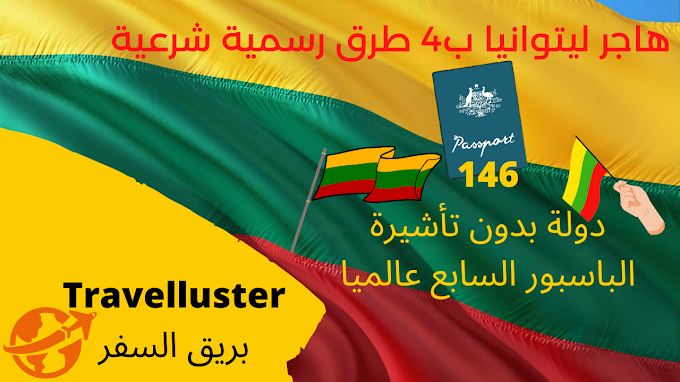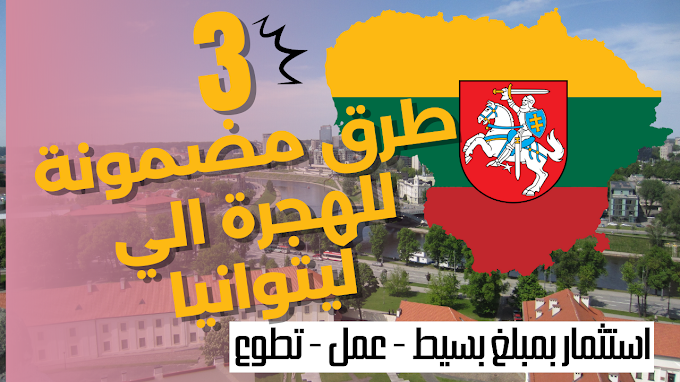I’d like to give you an introduction before I start discussing the 10 best places to visit in Chile. Chile has drawn attention to itself for its entirely unpredictable form, as a long, slender sliver of land sticking to the edge of a continent. The map of the land, seen in the pages of an Atlas, seems to you to be ridiculous, and fantastic; 4300 km in scale (Norway equal to Nigeria), and just 175 km in average distance, the whole idea is absurd. But once you are in Chilean territory, these borders are perfectly meaningful, and tourists will soon know Chile as a geographically independent unit.
The Andes, the great mountains of Argentina and Bolivia that form their eastern borders, are a great rock-and-ice barrier. A 1000 kilometers of parched land is situated in the Atacama Desert, dividing it north from Peru. To the West, the waves that wash along the Chilean coast, originating from Australasia, are just a few islands in the Pacific Ocean.
1-Santiago
Located in one of the most glamorous backdrops of the capital of the earth on a wide plain at the foot of the Andes. After a storm clears the air the views of the majestic mountains are really wonderful, particularly in the winter when snow-covered peaks as a white massif against the blue sky rise behind the city (though smog, unfortunately, often obscures such vistas). While the city itself is a quickly expanding city of about 7 million inhabitants, it still has its own proud name, long under the shadow of other big cities of South America, such as Buenos Aires and Rio de Janeiro.
It is divided into 32 independence municipalities, most of which are squat, flat neighborhoods spreading from the middle of the city. In comparison, the historic Centre is lightweight, handy and has a pleasant atmosphere. Part of the charm is that it is so green: huge, luxuriant trees fill the main square and many parks are well landscaped. However, this is particularly an all-purpose sense of vitality, where crowds from Santiaguinos often browse narrow streets filled with shoes, fruit barrows, news kiosks and vendors from coat hangers to pirated DVDs, making this place alluring.
2-Valparaíso, Viña and the Central Coast
The small central strip from Chile’s more than 4000 kms coast is the most visited and established among Rocas de Santo Domingo and Los Vilos. This 250km stretch of coastal resort is known as the Litoral Central and boasts bay after bay lined with beautiful beaches of white-sandy coastal resort. Sit next to each other in the centre of the strip. Valparaíso (Valpo for short) and Viña del Mar (or Viña). They are geographical vicinities but in appearance and climate they are different poles. Viña is the biggest and most ritziest beach resort in Chile.
Viña is characterized by western hedonism with its high altitudes, casino and hotels, as well as beaches and clubs in the vicinity of Reñaca. On the other side, Valparaíso, with colorful houses spilling chaotically down the hills to the sea, has even more personality (but no decent beaches). You would have to go south or north for stretches of desert. The resorts south of Valparaíso, which is more busy and more developed, are closest to Santiago via the “Autopista del Sol” (Ruta 78). Further south, a series of cabañas, villas and thin, unattractive resorts are almost uninterrupted.
3-El Norte Chico
Geographers refer to a “transitional region” as a field of rolling, sunbaked hills streaked by a breath of greenery, the Norte Chico, or “little north,” with a blaze of sudden river valleys. Its scant vegetation and semi-arid scrubland turn the lush Centre of the world into the desolate deserted bordering Peru and Bolivia. It ranges all the way up to Talal valley beginning at the Río Aconcagua on the north side of Santiago and more than 800 km north on the southernmost point of the Atacama. A variety of rivers flow from the Andes to the coast via the Norte Chico region, enabling irrigation and agriculture of the surrounding country.
It results in spectacular: luxuriant and vivid green terraces full of olives, snakes and wines between the brown and parched valley walls, creating a striking, visual contrast. Pisco, the pale herbal brandy distilled from sole dried raisins and beloved as their national drink by Chileans, is the most popular commodity of those valleys. La Serena – a pleasant, colonial-style building and a vibrant atmosphere, makes La Serena one of the few northern cities worth visit. The city is one of the most trendy seaside towns.
4-El Norte Grande
“El Norte Grande” spans about a fifth of the area of Chile’s mainland but has a population of just five per cent. The Atacama Desert is its most impressive aspect. The driest desert in the world has regions where there has never been any rainfall. It usually has a landscape of rock and gravel stretching over a wide plain, soothed only by crinkly mountain ranges. To the west the plain is bordered by many coastal hills that steeply descend into a land shelf under which most of the settlements of the region are spread. To the east, a high windy plateau consisting of the lakes and the saltwater flats, ringed with snowcapped volcanoes, rises up into the Altiplano.
Great and barren, the area has a wealth of superb attractions and is the highlight of a trip to Chile for many visitors – especially European tourists, who find nothing like it at home from afar. The Pacific coastline is lined with vast stretches of spectacular scenery, while inside the desert pampas, not only the landscape of the country, but also interesting signs left by humans, are remarkable. One of these is the road of nitrate fantastic cities that are easily reached from Iquique like Humberstone and Santa Laura.
One is the major geoglyphic drawings left by native peoples on the hillside and the ravines of the desert – the Cerro Pintados, south of Iquique, Cerro Unitas, east of Huara, and Tiliviche, between Huara and Arica, offer remarkable examples.
5-The Central Valley
The central plain of Chile stretches from Santiago south into the Rio Biobío, and is broad, thin, and west-backed by the Andes with side valleys flowing through them. The valley of Santiago is a long and narrow plain. It is the fertile land of Chile, and the vast greenery of the vineyards, vineyards and pastures over the valley floor. Except in urban areas, country roads are daunting, and maybe the Central Valley is the only region of Chile where horse-drawn carts ploddle through Pan Americana.
Although Panamericana’s main highway, Route 5, stretches from Santiago to Santiago, Rancagua to Los Angeles and beyond, the central kernel is situated between Chillan’s capital and town, some 400 km south, a location where large estancias, or haciendas, were founded during the colonial period. Many of the rural customs have been respected by the people and the cultic culture of huaso or cowboys is as robust as ever when you see the rodeos in stadiums called medialunas.
Further south, the busy city of Concepción guards the Biobío mouth, the mighty river that for three hundred years was the border between occupied, colonial Chile and unconquered Mapuche lands. The border is now tracing the spread of the Mapuche names and the pioneer tin-roof architecture, which can be seen in the remains of colonial Spanish fort forts. The sloping plains lead beyond the Brio Bio to the district of the lake, to green forests and remote Andes lakes.
6-The Lake District
An area of lush agricultural land, thick woodland, snowcapped volcanoes and deep, clear lakes is largely concealed in the mountains and spans 339kms from Temuco in the northern to Puerto Montt in the south. By the 1880s, as small agricultural towns arrived, the whole world was whitewashed in dense forests: high araucaria to the north, thick forest to the west, thick forest valdiviana on the coast; two-thousand-year-old warnings to the south: “Chile’s Yosemite”
The Mapuche (literally the ‘populations of the land’) lived in these mountains, fighting against the Incas for 350, before eventually collapsing into the Chilean Army in the 80ies, defied Spanish colonization attempts. The region has developed in the 100th century since Mapuche subjugation into one of the finest milk-growing areas of Chile and its architectural and culinary type, in particular, Valdivia, Puerto Varas and Frutillar, has seen German influence.
Indigenous culture still survives: the Mapuche legacy is a tribute of honor, and at the present time in Chile it is claimed by at least half a million people, many of whom live in the vast reserves of indigenous peoples through the Lake District.
7-Chiloé
The intriguing archipelago of Chiloé, which belongs to a mountain range which has fallen beneath the waves since the last ice ages, is a sanctuary of rural tranquilly situated directly south of the Lake District. South America’s second-largest island is the biggest island, Isla Grande. The two major cities Ancud and Castro connect the port of Quellón, which has a half-long connection from the Panamericana, which can be easily explored by bicycle, car or bus.
The heavily forested Chiloé National Park, as well as Tantauco Park, provide excellent opportunities for discovering the rare wilderness of Chilote, whilst the coastal villages and islands on the east coast of Isla Grande, most accessible as Isla Quinchao and Isla Lemuy, provide insights into typical Chilote life. The native Chonos and Huilliche (southern Mapuche) originally inhabited Chiloé, who had eked out fishing and farming living until the island was taken over by Spain, in 1567.
Thanks to the fierce opposition of the Mapuche continent to the European invaders, Chiloé was separated from continental Chile for over 300 years. This resulted in no improvement in the sluggish speed of insular life. Indeed, during the Independence Wars, until the end loss of the Independence forces in 1826, Ancud was the last fortress of the Spanish empire. Chiloé remained largely remote until the end of the twentieth century, despite being used as a stopover at the California Gold Rush, although at present it attracting many tourists with its unusual architecture, food, and popular myths and legends.
8-Northern Patagonia
The southern highway from Puerto Montt spans more than a thousand kilometers to the south and travels through the west, greenest, west and narrower areas of Chile and finishes its vast journey in Villa O’higgins, a small town. The path is made up of swamping, snowcapped mountains, Ice Age glaciers, blue-green fjords, turquoise lakes and rivers and is one of the biggest swaths in the tempestuous rain forest of the world. It is an uninterrupted wild nature trail.
Much of it is in Aysén, the ‘last frontier’ of Chile, the last area to be opened in the beginning of the 20th century. A century later the area remained quite diminished and still had the marginal cut-off feeling of a pioneer zone. Now in the past you could resume again your northern exploration of the area with the eruption of the Chaitén Volcano in 2008. You will sail from Puerto Montt to both Alerce Andino and Hornopirén Parc National before taking a cruise to Caleta Gonzalo, where the route leads to the temperate, virgin rainforest of Pumalín park and ends up in the volcano-ravaged city of Chaitén.
The unscripted settlement of Villa Santa Lucía is on the south side of the road from Chaitén. One branch of the street goes east to the frontier village of Futaleufú, which is one of the best whitewater rafting destinations in the country. From the south, there is the Carretera in the Parque Nacional Queulat, which is one of the most spectacular locations to take off the highway with an extraordinary hanging glacier and excellent tracks. Don’t miss the opportunity to comfort in the spacious Termas of Puyuhuapi, a secluded hot tub.
9-Southern Patagonia
Patagonia stands at the southern edge of America – not counting Antarctica, indeed the mass of the earth. The very name is exciting for many travellers, but the truth can be harsh: it is cursed by the enduring wind, the God-broom Escoba, the winters long and the summers shorter. “Patagonia” is geographically undefined and refers generally to the thin triangle of soil to the south from a line between Puerto Montt in Chile and the Península Valdés in Argentina.
In Chile the term is in reality traditionally for Southern Patagonia. Before plunging into the Water, the Andes take a last dramatic breath. While much of Argentina’s Patagonia are flat rolling pampa, it is said that they are Patagonians, and Chilean and Argentineans, second and unified by the joint ranch culture which has long been in decline, on both sides. It is popular.
In recent days, a huge number of tourists from Chile and abroad are walking to Patagonia – the National Park of the Torres del Paine, a massif of world-renowned granite towers in Chile that is the most prominent and majestic national park, and accessible from the magnificent portal town of Puerto Natales. Others come to follow the footprints of the region’s famous travelers: Ferdinand Magellan Navigator, naturalist Charles Darwin and Bruce Chatwin author; to look at a lot of magnificent glaciers in the region or to discover the colonies of the Penguin from Punta Arenas, the vibrant provincial capital of the Port city on the shores of Magellan Storm.
The huge range of cold grassland between these two cities spreads into the Atlantic coast and takes in the devastatingly majestic Pali Aike Park. The isolated islands on the Pacific Coast are less explored.
10-Tierra del Fuego
Tierra del Fuego (“The Land of Fire”) is just as thrilling for travelers as Patagonia, at the very bottom of the South Americas and divided between Chile and Argentina. The Strait of Magellan is isolated. Actually, after the sighting of hundreds of fires lit by the local Yámana, it was Magellan who thought up the dramatic and unexpected name. Although it consists of a variety of islands, it is more or less the most populated portion of the world, the Isla Grande, South America’s largest island. Argentina has Isla Grande in the easternmost portion, the Isla de los Estados plus islets to the south, and the rest is Chilean territory in the southern part of the region.
The remote main town of Porvenir on the Chilean side is situated on the Strait of Magellan. Flawed and sandy flats surround a wide region of northern and central Island Grande, but the terrain is less rugged with dense forests and crystalline rivers extending to the south east, near Camerón into a range of virgin lakes, including lake Blanco and, to the far south, the nearly inaccessible peaks of Cordillera Darwin 2000 metres above sea level.
The smallest Puerto Williams settlement in the country, plus a difficult hiking path in South America, Los Dentes Circuit, are located south of Isla Grande, across the Beagle Channel. Cabo de Hornos, which is America’s end property, is accessible only by sea or air, is beyond Navarino.
Final thoughts:
Chile has formed almost like an island surrounded by the Andes, the Atacama Desert and the Pacific, largely undisturbed by the turmoil that has spilled over most of the history of South America. While the current recorded history of Spain has been populated by indigenous people for thousands of years, the arrival of the Spaniards dates from the 16th century.
Chile has taken on its own political form from its incipient days, different from those of its neighbors. The imperial culture that arose and the consequent fight for independence seem similar to the entire continent. Chile gained its so-called ‘England of South America’ from its largely organized, liberal form of government and a sound reverence for the law in the XIXth century, which is why it was so shocking that the authoritarian military dictatorship of General Augusto Pinochet returned the interest of the outside world in the 70s and 80s.
Today, Chile is an external country with strongly defined democracy and political and economic prosperity, but with some significant socioeconomic inequality and unfinished political legacies hiding under the soil.




































0 Comments